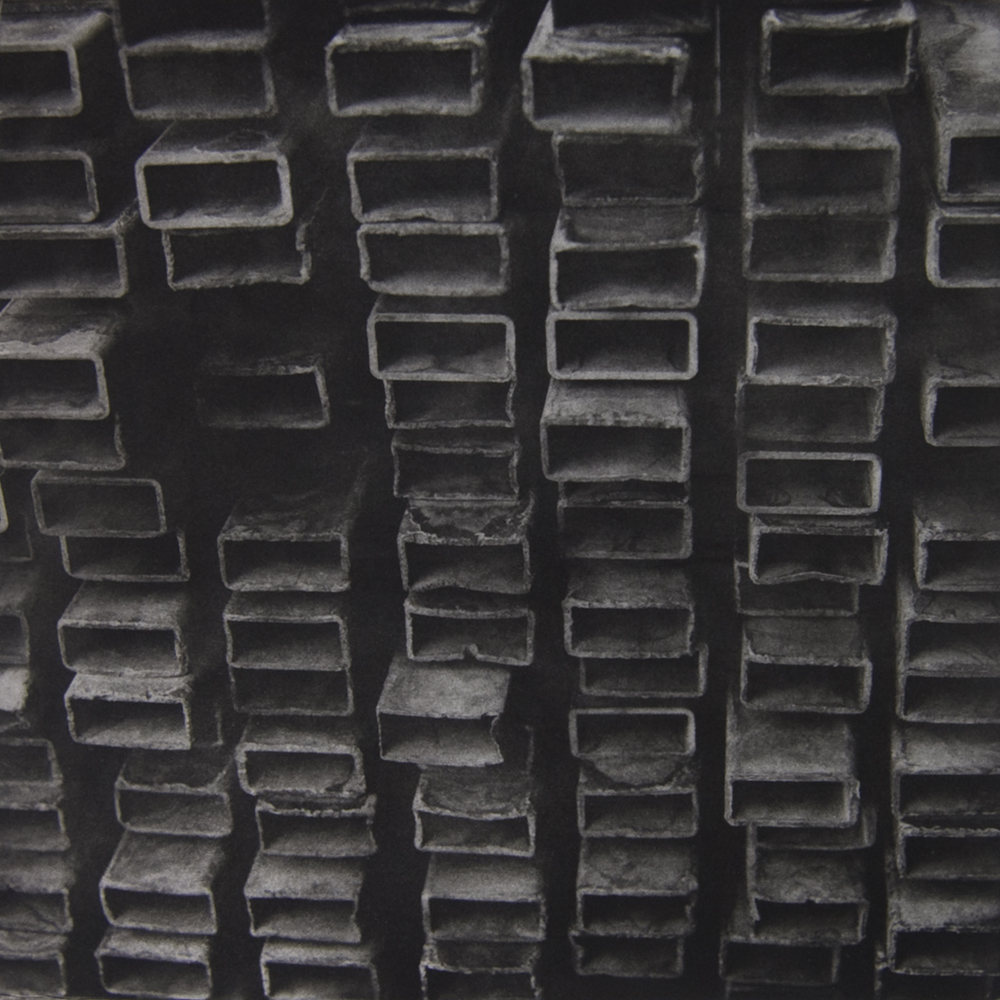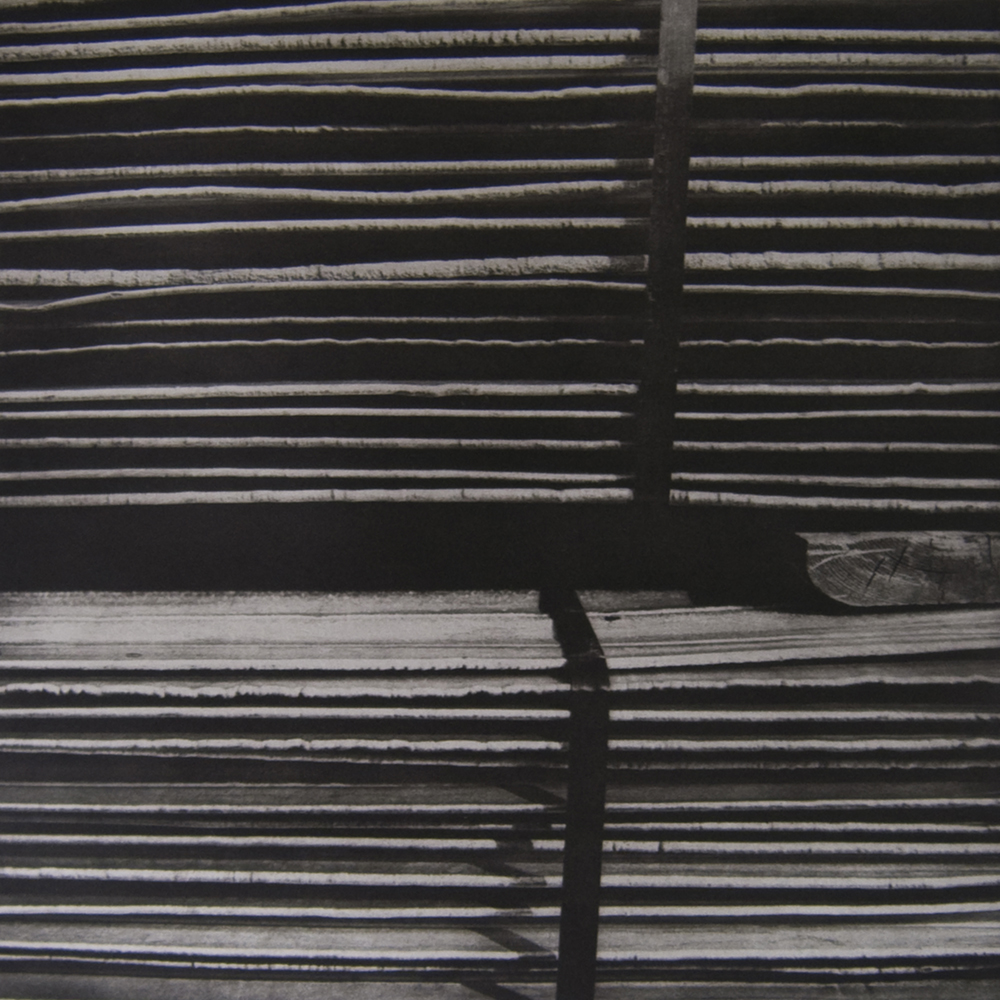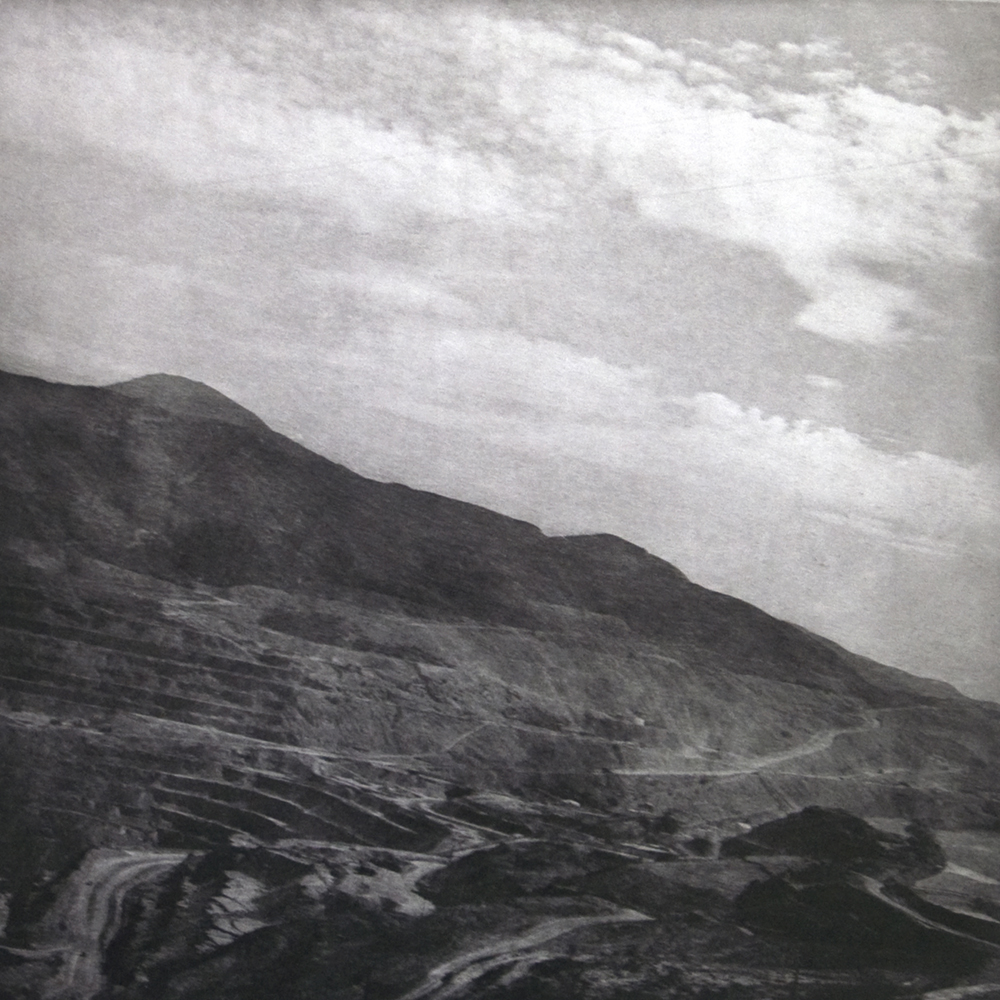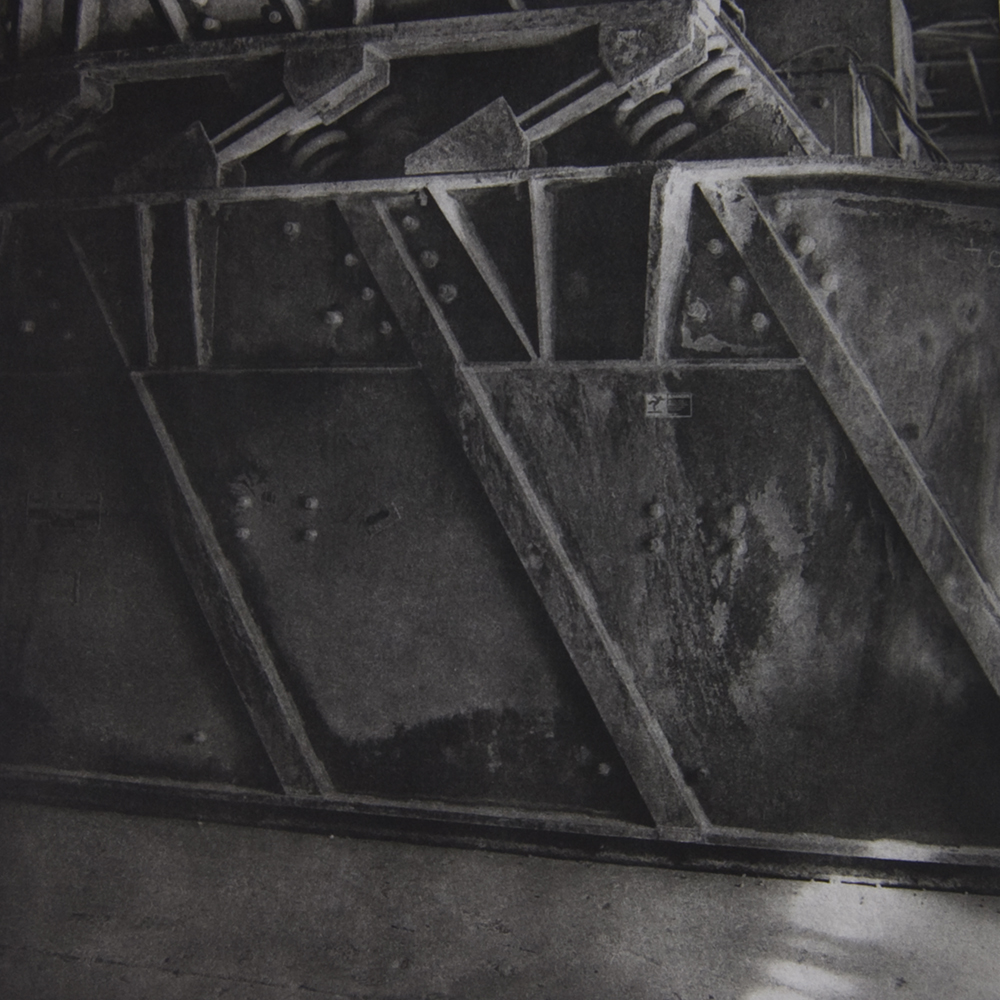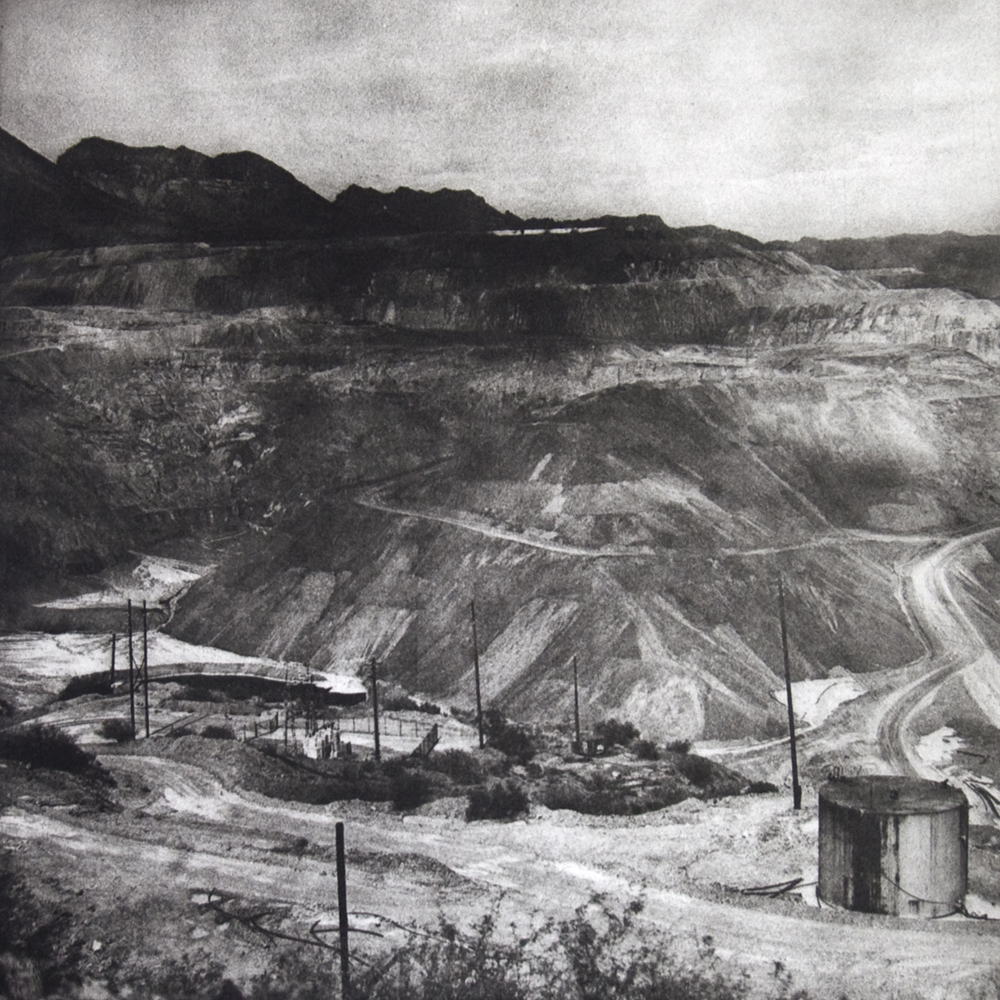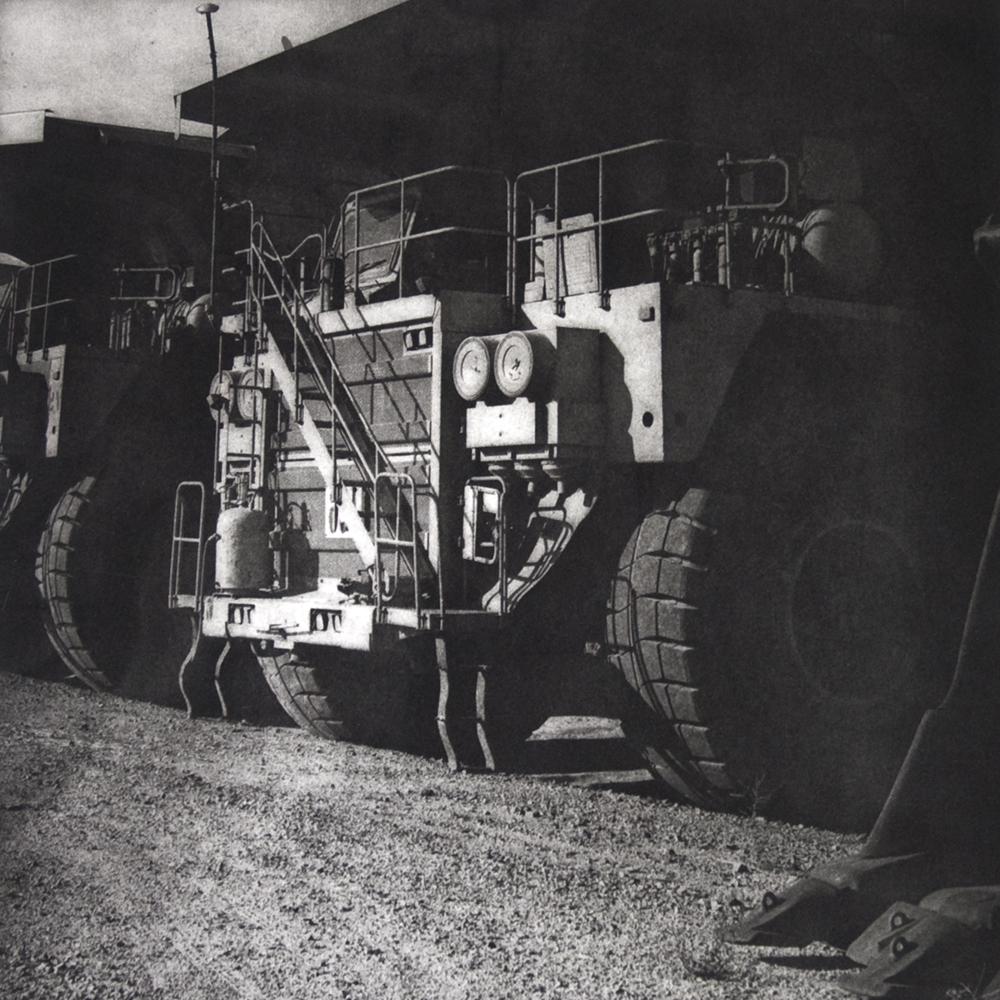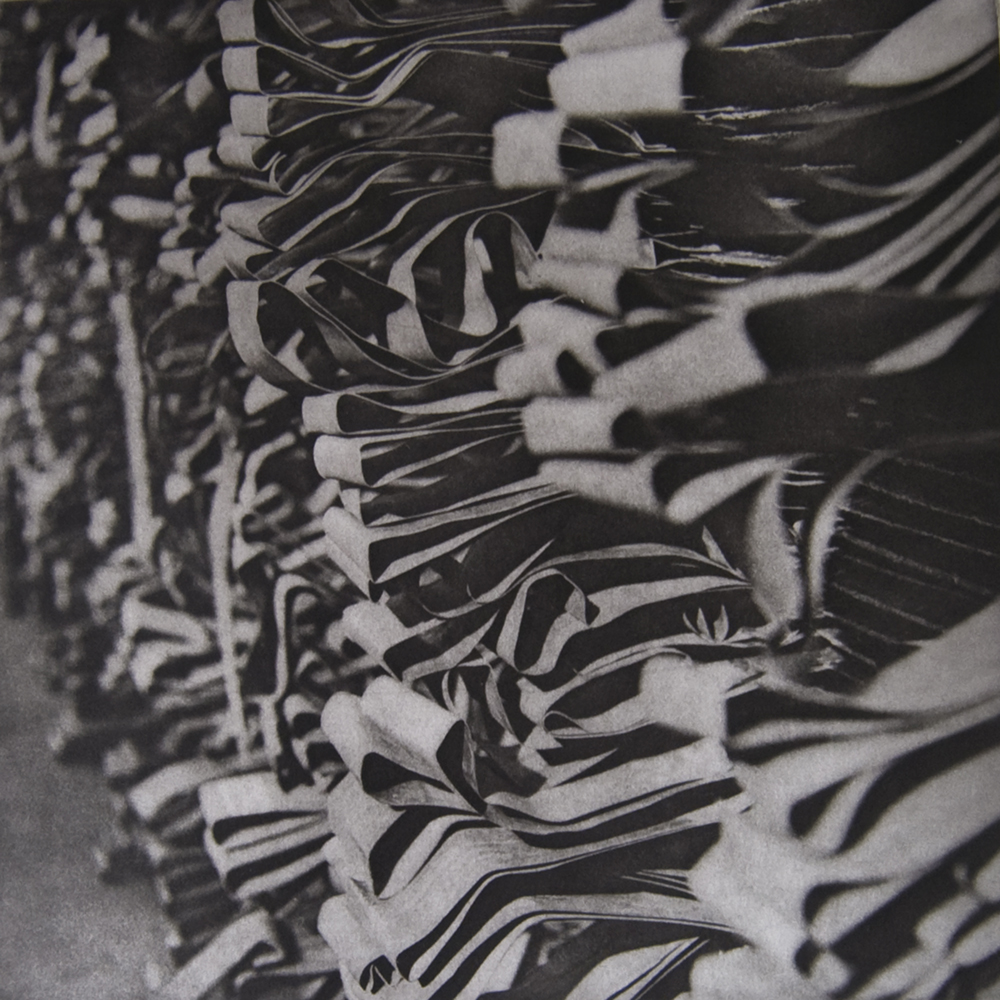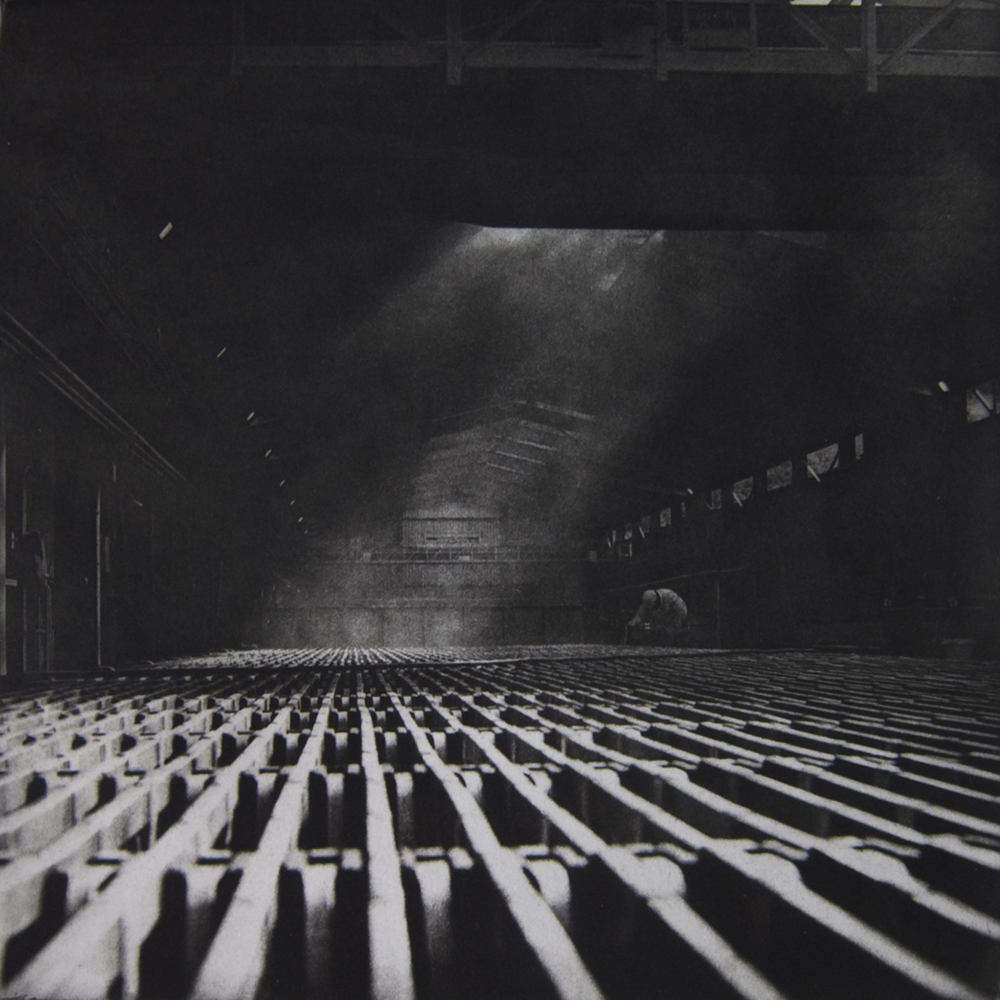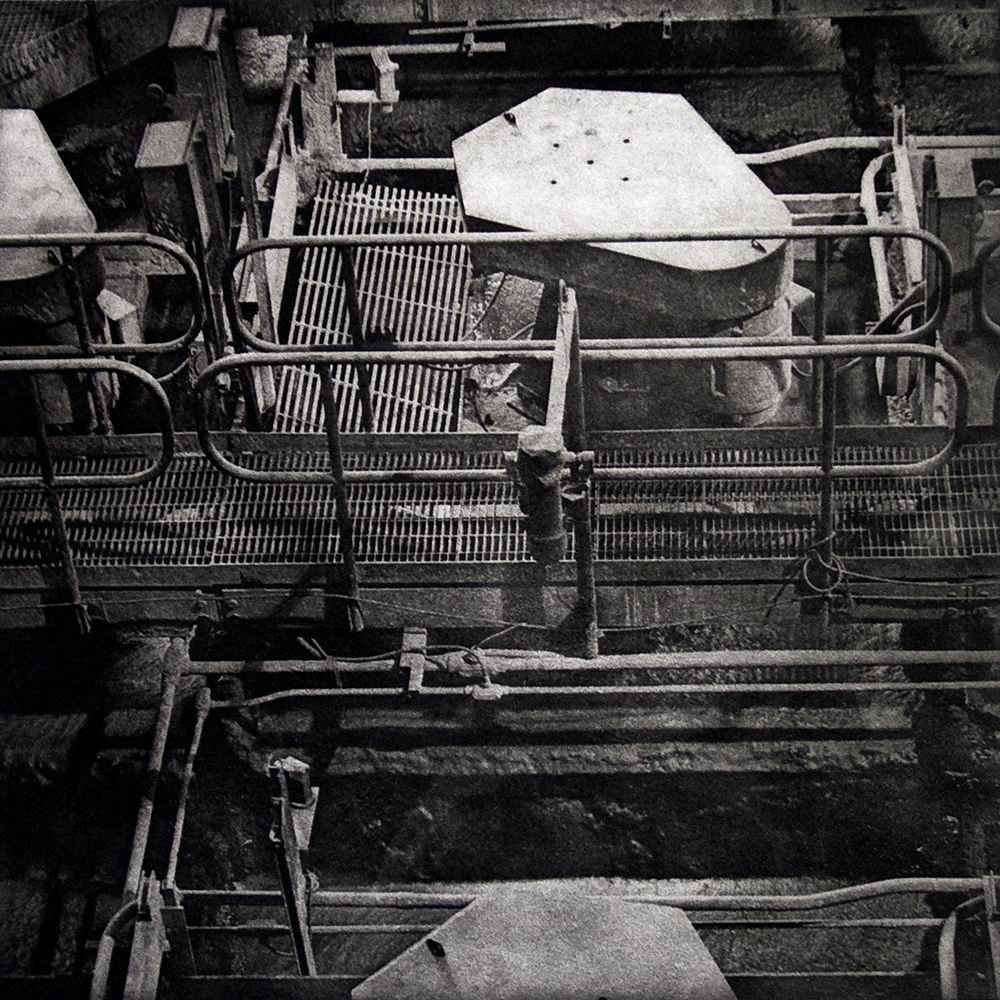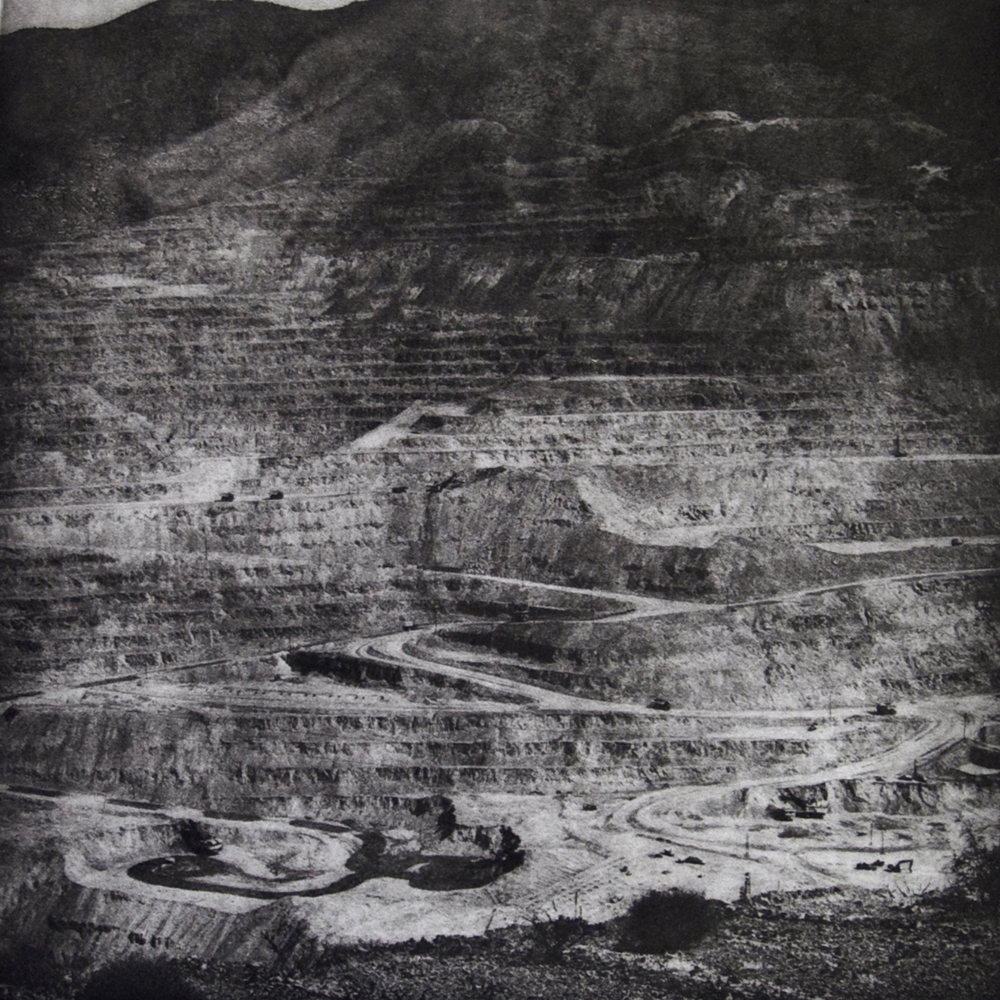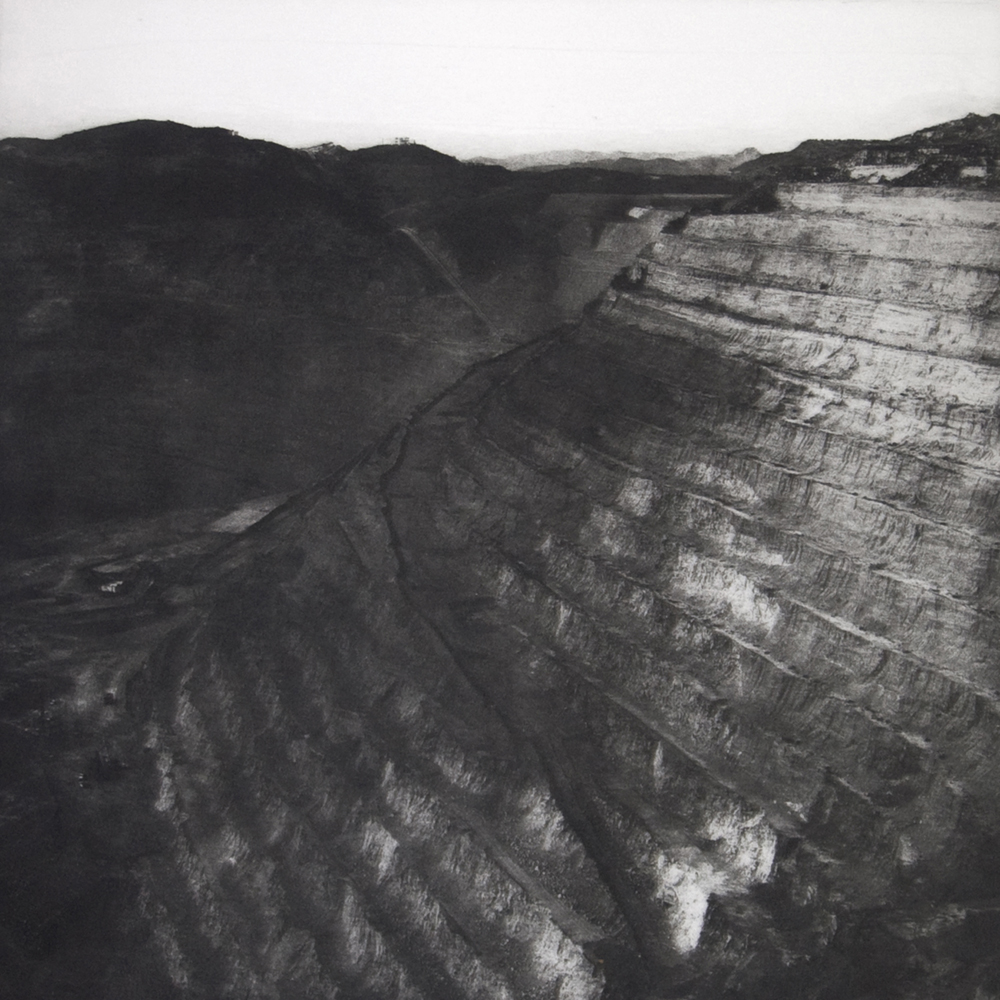Angela Franks Wells: Copper Mine
This week, we will be exploring projects inspired by place. Today, we’ll be looking at Angela Franks Wells’ series The Copper Mine.
I was first introduced to Angela Franks Wells’ work while applying to graduate school. In undergrad, I fell in love with alternative processes, so being able to work with someone so excited to experiment and explore the non-traditional was a no-brainer. I’m still amazed I was able to work with someone so dedicated to and excited for their students. No matter what she’s doing, she’s always enthusiastic about photography. One of my favorite pieces of advice from her, when anyone was struggling in the studio, was to “go play!” encouraging us to find our ideas in practice.
Angela explores place from the perspective of the people and industry. Her images are a quiet observation, focusing on the tools, hands, and light within these spaces. She skillfully marries the process and concept, something many artists who dabble in alternative processes lack. With her project Copper Mine, she pairs an insight into the copper mining industry with her expertise in the photogravure process, which uses copper plates. Her images capture the wonder and warmth she has for photography.
Angela Franks Wells is a photography-based artist specializing in 19th century photographic processes. As an educator, she is committed to facilitating creative thinking and skilled making with her students. Her recent creative endeavors are about playful investigation and finding levity. Angela is an Associate Professor of Photography at East Carolina University in Greenville, NC. where she enjoys the lush greenery of the south, proper weather storms, and the benefits of natural humidity in the studio.
Follow Angela on Instagram at: @angelafrankswells
Copper Mine
I humbly admit that I have spent the many years becoming a master of copperplate photogravure. This technique of visual expression is what brought me to Arizona. The nature of the process embraces traditions of photography and printmaking; requires a great deal of patience, tenacity, and time; and necessitates copper. Arizona is one of the world’s leading copper producers and although I enjoy imagining a drive up to Jerome to harvest my own ore and make the plates needed for my work; I order beautiful mirror polish sheets of copper from New Jersey. The lost connection between the harvest and the use is troubling.
Copper Mine provides a visual record of my journey to better understand this essential material and serves as a connection between industry and culture. This project was made possible through the generous support and funding from the Arizona Commission on the Arts Artist Project Grant.
Epiphany Knedler: How did your project come about?
Angela Franks Wells: Like many of us, I spend a lot of time thinking—over thinking if I’m being completely honest—about what to make work about. I was processing film, a bunch of random rolls I’d made trying to find something new and inspiring, and worrying about when my next order of copper sheets was going to arrive. It struck me as funny, in a ridiculous way, that I was living in Arizona where at the time roughly 65% of the country’s copper was being mined and I order my copper sheets from New Jersey. I had spent years mastering copperplate photogravure, copper is an essential part of the process and I knew nothing of the mining industry or process. The project grew from that simple realization.
Our relationship with mining is complicated. Mining is dangerous, literally invades the landscape, the repercussions to our environment, communities, and the lives of the workers are significant. At the same time, we need these resources. Yes, I could use a different process, but are any of us going to give up the niceties of life, including our cell phones which need copper wire, to protect the land. I don’t think so. The mining industry is constantly straddling the space where they produce the resources we want, protecting the people working at the mines, and minimizing the impact on the environment.
Getting access to the mines was an adventure. I started by trying to avoid this, driving out to mine locations, doing a little back road exploration, peeking through fences. Not the smartest approach! I received a grant from the Arizona Commission on the Arts to make the work and decided to use that to my advantage. After months of emails and phone calls, I finally got access to the Bagdad Mine in Bagdad, AZ. I was assigned a guide and it was the greatest gift. He was a third-generation miner who loved to tell stories. Learning about the process from extraction, the mills, sheeting—all of it was absolutely fascinating. Getting insight to the human impact (positive and negative), hearing the reverence for the mine, the pride in surviving long enough to retire, seeing the community that was built to support the people working there, all of it was beyond anything I’ve ever experienced. Being at the mine was the first time I truly understood awe. The technology, the scale of everything (tires taller than my reach), the human capacity to create and endure, the beauty and the tragedy…words will never do them justice. The work is not a critique or a celebration. It is an observation.
EK: What relationship does place or location play within your practice?
AFW: There is a distinct difference between place and space. Place is like a wide-angle lens, a fuller view of the location. Space is zoomed in, a selective view of the location. My practice is definitely deeply connected to space. I’m interested in the ways that spaces impact and reflect the human interaction among them. Our spaces, whether where we live, work, or create resonate who are. The result of this perspective allows me to explore stories about people within the context of their space. I struggle seeing a place or location without wanting to know about the folks that inhabit them!
EK: I know this work was included in the exhibition Landscapes of Extraction: The Art of Mining in the American West; can you talk about your interest in the intersection of labor and place (and/or space)?
AFW: The spaces where we labor become a part of us, often a second sort of home. We spend so much of our lives working. It makes sense that our work environments reflect the kind of labor we partake in and how we as individuals and communities transform these spaces to become our own. From an office that provides comfort, to a tool box of perfectly aligned wrenches; to a studio that allows you to problem solve, to a site specific neighborhood that allows you to work and be near family; spaces are made so we can labor and the space communicates the kind of work being done. Where we work impact who we are. It’s all a beautiful circle of connection and direct influence or impact.
EK: Can you tell us about your use of photogravure in this series?
AFW: The prints had to be copperplate photogravure. No other process had that direct relationship between material and content. The goal of the series was for me to understand the materials I use. It just made sense. I still think about what I saw, smelled, felt, and heard. I hold a copper plate and consider the process required to make it.
EK: What’s next for you?
AFW: I’ve just started a new “thing”. I’m not even sure if it will be a fully realized project! As you know, I’m deeply interested in the relationship of photography and truth; representation and reality; and play in the creative practice. I figured it was time to make images that allow me to investigate the intersections. Simulacra meets pun meets discomfort meets cheeky humor in a staged setting. And of course trying to find a way of making that fits within a very full schedule as a professor who struggles with saying no 🙂
Epiphany Knedler is an imagemaker sharing stories of American life. Using Midwestern aesthetics, she creates images and installations exploring histories. She is based in Aberdeen, South Dakota serving as a Lecturer of Art and freelance writer. Her work has been exhibited with Lenscratch, Dek Unu Arts, F-Stop Magazine, and Photolucida Critical Mass. She is the co-founder of MidwestNice Art.
Follow Epiphany Knedler on Instagram: @epiphanysk
Posts on Lenscratch may not be reproduced without the permission of the Lenscratch staff and the photographer.
Recommended
-
Luther Price: New Utopia and Light Fracture Presented by VSW PressApril 7th, 2024
-
Artists of Türkiye: Sirkhane DarkroomMarch 26th, 2024
-
European Week: Sayuri IchidaMarch 8th, 2024
-
European Week: Steffen DiemerMarch 6th, 2024
-
Rebecca Sexton Larson: The Reluctant CaregiverFebruary 26th, 2024

